Decatur II (Destroyer No. 5)
1902-1919
Stephen Decatur Jr. -- born on 5 January 1779 in Sinepuxent, Md. to Stephen Decatur Sr., a naval officer, and his wife Ann [Pine] -- would become one of the foremost figures in the history of the early United States Navy. He was warranted a midshipman at the age of 19 and made his first cruise in the frigate United States. In command of the schooner Enterprise at the outbreak of the Tripolitan War, he captured the bomb ketch Mastico on 23 December 1803. He used this ship, renamed Intrepid, in his daring raid to burn the captured frigate Philadelphia, whose first commanding officer was his father, in the harbor of Tripoli, 16 February 1804. He also distinguished himself during the attacks on Tripoli in command of a gunboat division. Promoted to captain, he was assigned command of the frigate Constitution, and later, in November 1804, the frigate Congress. He negotiated with the Bey of Tunis at the close of the Tripolitan War, and returned to the United States in September 1805 with the Tunisian envoy.
During the War of 1812, he commanded the frigate United States, capturing HMS Macedonian in one of the greatest single-ship actions of naval history. He took command of the frigate President at New York and attempting to slip through the blockade fell in with a British squadron of five heavy ships. After two hours of furious combat the frigate HMS Endymion was silenced, but President had suffered such extensive damage that it was impossible to execute an escape. The twice-wounded Decatur reluctantly surrendered, but was paroled, landing at New London, Conn., on 22 February 1815.
Returning to the Mediterranean in 1815, Decatur in the frigate Guerriere, he negotiated a treaty with the Dey of Algiers which ended tribute and exacted full payment for injuries to Americans, then concluded similar agreements with the Bey of Tunis and the Bashaw of Tripoli. From November 1815 until 22 March 1820, Decatur served on the Board of Navy Commissioners. He was killed on that latter date in a duel with Commodore James Barron.
Decatur's body was initially placed in the tomb of Joel Barlow at Washington, D.C. His widow, Susan, tried for several years to receive a pension from the U.S. Government. By an act of Congress on 3 March 1837, she was granted a pension retroactive to Decatur's death. In 1846, Decatur’s body was later moved to Philadelphia, where he was buried at St. Peter's Church, alongside his mother and father.
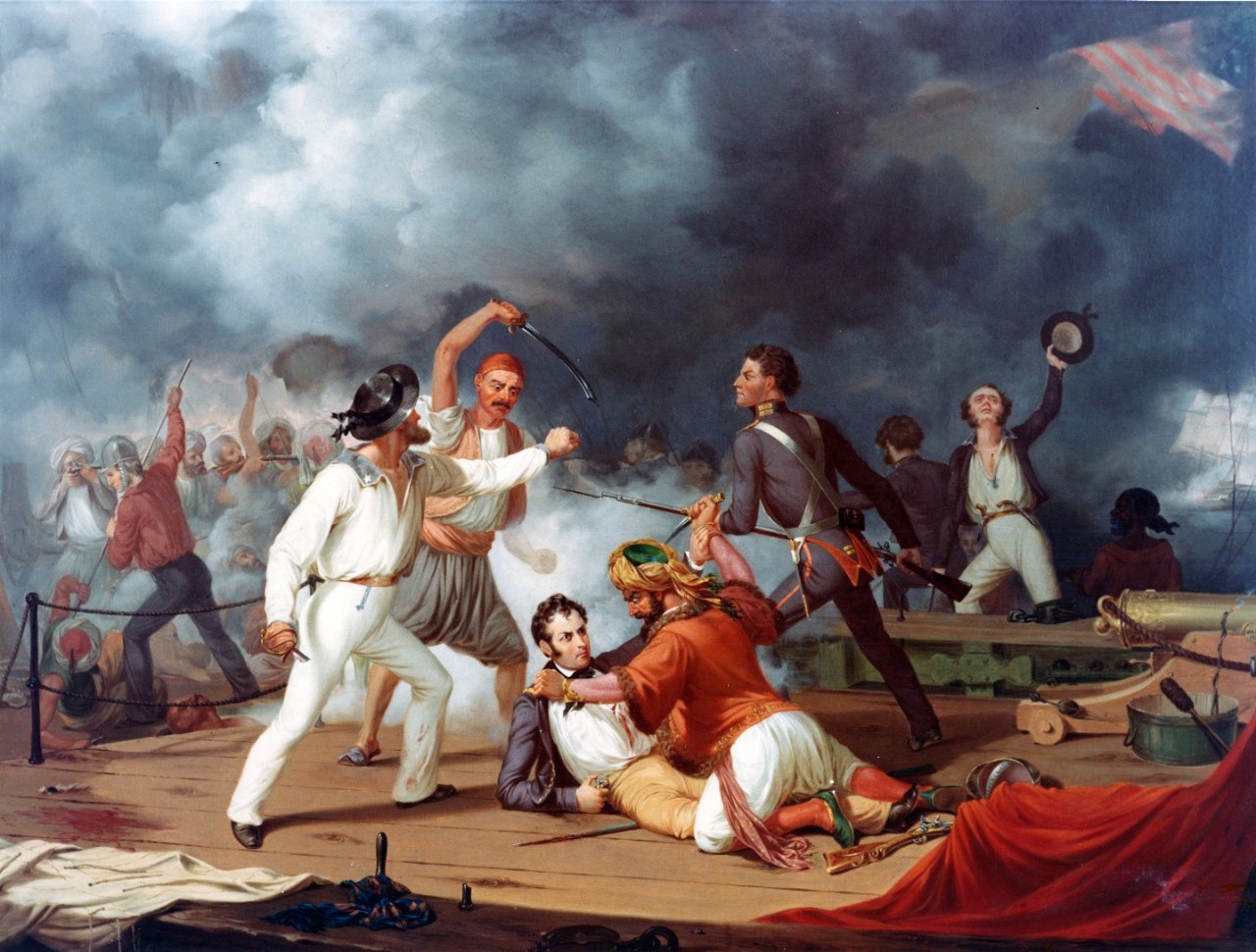
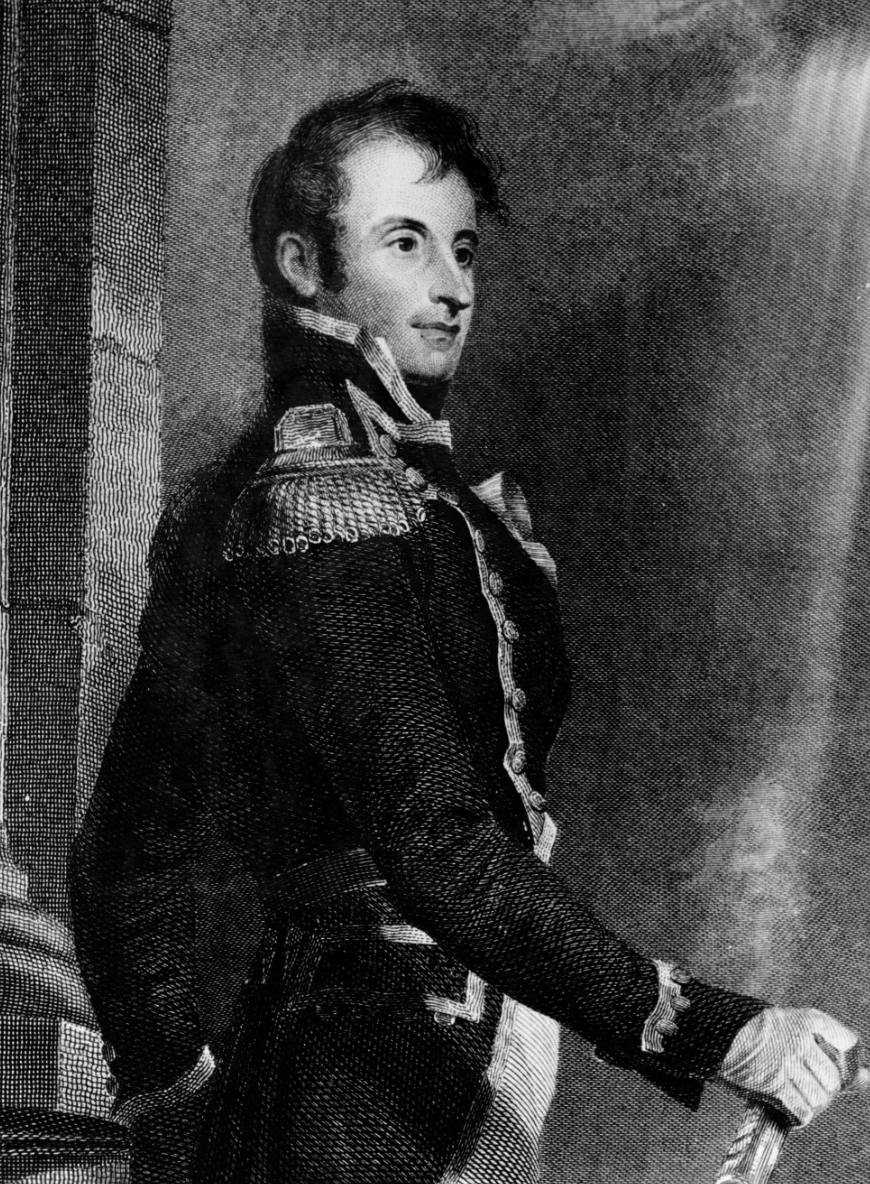
II
(Destroyer No. 5: displacement 420; length 250'; beam 23'7"; draft 6'6"; speed 28 knots; complement 73; armament 2 3-inch, 2 18-inch torpedo tubes; class Bainbridge)
The second Decatur (Destroyer No. 5) was laid down on 26 July 1899 at Richmond, Va., by William R. Trigg Co.; launched on 26 September 1900; sponsored by Miss Maria Decatur Mayo, great-grandniece of Commodore Decatur; and commissioned at the Norfolk Navy Yard, Portsmouth, Va., on 19 May 1902, Lt. Lloyd H. Chandler in command.
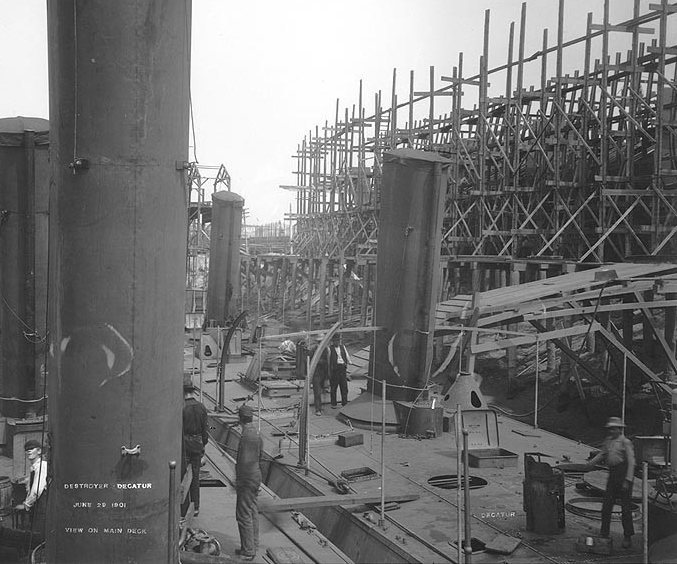
Decatur was designated lead vessel of the First Torpedo Flotilla with whom she conducted drills and maneuvers along the eastern seaboard and in the Caribbean through the end of the year. During the summer of 1903, the flotilla was assigned to the Coast Squadron, North Atlantic Fleet, and took part in the search problem and joint maneuvers with the Army on the coast of Maine.
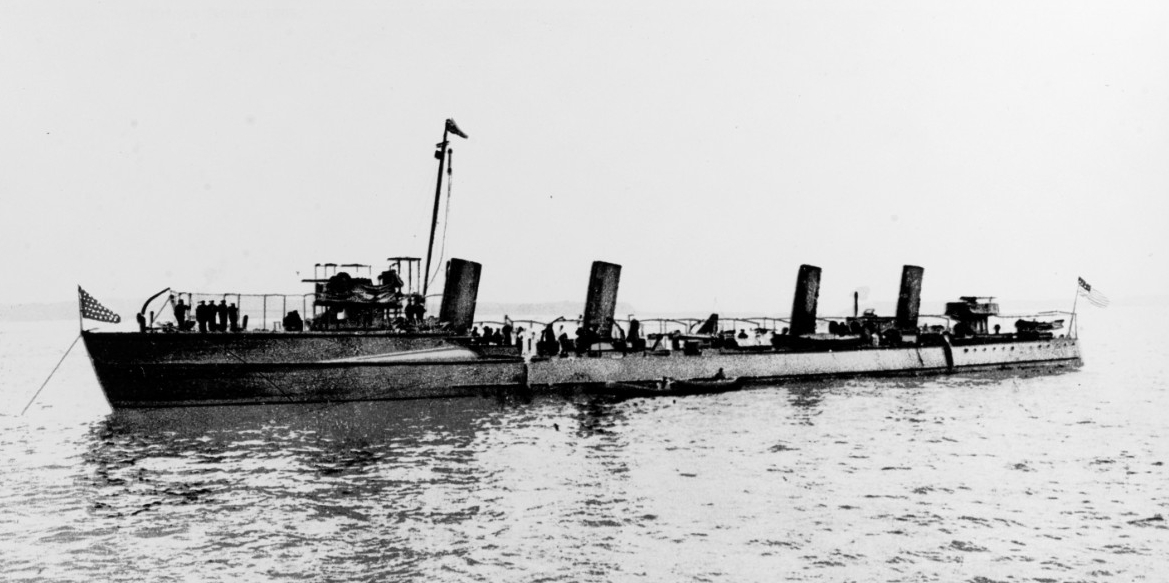
Decatur then shifted to Oyster Bay [Long Island], N.Y., to participate in a Presidential review for President Theodore Roosevelt (15-17 August). After the review on 17 August, she cleared Long Island Sound that same day and steamed for Norfolk, reaching on the 19th. While at Norfolk, she and her fellow members of the First Torpedo Flotilla were fitted out for distant service. All were detached from the Coast Squadron, North Atlantic Fleet, on 26 September. Getting underway again on 12 November, the destroyer operated from Hampton Roads and conducted exercises off the Virginia capes into December. On the 12th, she departed Hampton Roads as part of the First Torpedo Flotilla [Bainbridge (Torpedo Boat Destroyer No. 1); Barry (Torpedo Boat Destroyer No. 2); Chauncey (Torpedo Boat Destroyer No. 3); Dale (Torpedo Boat Destroyer No. 4) and Decatur] convoyed by Baltimore (Cruiser No. 3). Bound for service with the Asiatic Squadron, they initially steamed southward to Port Royal, S.C. (14-16 December), then on to Key West, Fla. (18-23 December). While at Key West, the auxiliary cruiser Buffalo relieved Baltimore as the flotilla's escort for the remainder of the journey to the Far East. The force spent Christmas Day at sea and arrived at San Juan, Puerto Rico (P.R.) on 29 December and spent the New Year’s holidays in port there.
Resuming their eastward passage across the Atlantic on 6 January 1904, the flotilla reached Las Palmas, Gran Canaria, Canary Islands on 18 January. Clearing the island on 24 January, the ships proceeded to Gibraltar (27-31 January); Algiers, French Algeria (1-7 February); and Valetta, Malta (9-21 February). The flotilla and Buffalo had to lay over for twelve days while Barry went into drydock to have her propellers repaired after damaging them while mooring. With the repairs completed, they continued on to Port Said, Egypt (25-26 February), transited the Suez Canal to Suez, Egypt (28-29 February) before steaming down the Red Sea to Aden (4-9 March). Steaming out of Aden on the 9th, the flotilla crossed the Arabian Sea to Bombay [Mumbai], India (15-23 March), then proceeded to the British possessions at Colombo, Ceylon [Sri Lanka] (26-27 March) and Singapore (3-9 April) before steaming through the South China Sea to her new station in the Philippine Islands (P.I.). The flotilla and its escort stood in to the Navy Yard at Cavite, P.I., on 14 April. Upon their arrival, the ships were assigned to the Torpedo Flotilla, Battleship Squadron, Asiatic Fleet.
The flotilla engaged in torpedo attacks and practical exercises with the Battleship Squadron on the China coast (May-October 1904). In March 1905, Decatur entered the yard at Hong Kong for docking and overhaul. After returning to Cavite on 15 April 1905, the flotilla conducted a cruise of the Philippine archipelago as far south as the islands of Borneo, Tawi Tawi, and Mindanao. After this cruise, the flotilla crossed the South China Sea and again conducted tactical training and exercises with the fleet’s battleship and cruiser squadrons off the Chinese coast (July-September).
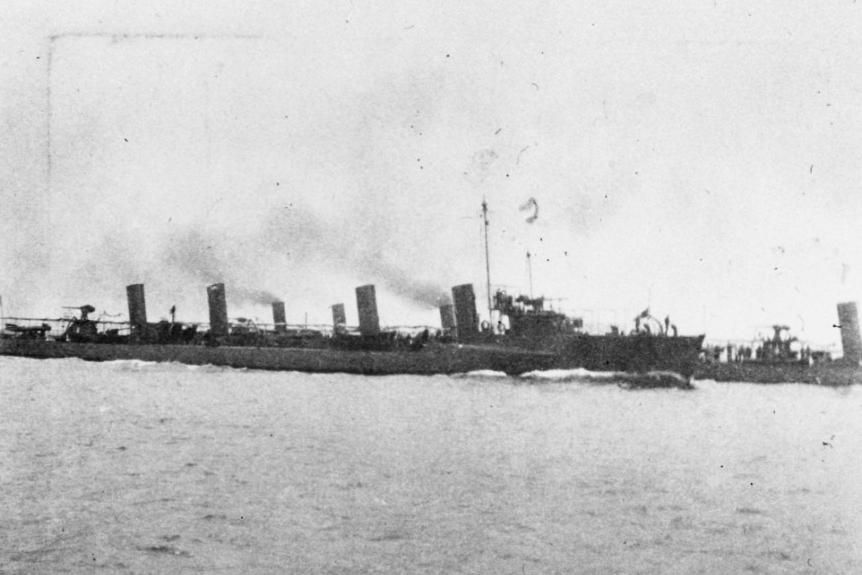
Returning to the Philippines, Decatur was placed in reserve at Cavite on 5 December 1905. For the next three years, she made infrequent cruises, two of note, however, included one to the southern Philippines (January-February 1908) and the other to Saigon, French Indochina [Ho Chi Minh City, Vietnam]. Departing Cavite, she steamed for the French possession on 17 May 1908 and made her return ten days later. Seven weeks later, on 7 July 1908, Ens. Chester W. Nimitz, Decatur’s commanding officer, ran the destroyer aground on a mudbank while bringing her into the harbor at Batangas, P.I. He was both unsure of his position and had failed to check the tides. When he could not get the ship off immediately, he ordered a cot to be brought to the bridge, and he slept until the tide rose and freed the ship. He was subsequently court-martialed and found guilty of neglect of duty. Given his otherwise exemplary record and ready willingness to accept responsibility for his failure, however, the court only issued the young Nimitz a letter of reprimand. Decatur was later placed out of commission at Olongapo (P.I.) Naval Station on 18 February 1909.
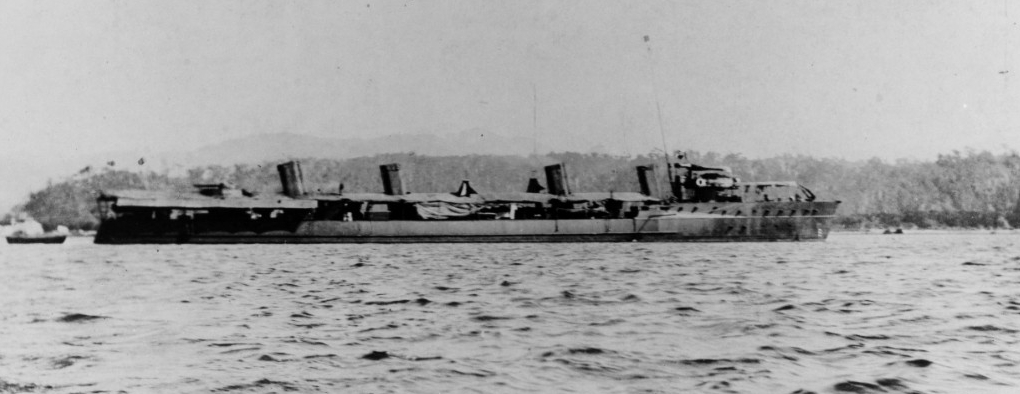
Decatur was placed back into commission in reserve on 22 April 1910, Ens. Carroll S. Graves in command, and then placed back into full commission on 22 December 1910. The destroyer resumed training and operations with the Torpedo Flotilla, Asiatic Fleet, cruising in the southern Philippines. On 18 July 1911, she cleared Manila and steamed to Shanghai (22 July-15 August) before visiting Japan, calling at Hakodate, Hokkaido (21 August-27 August); Yokohama, Honshu (29 August-14 September) and Nagasaki, Kyushu (17-25 September) before making her return to Shanghai on the 26th. Departing on 20 October, she visited Siakwan [Siachwan Tao] then entered the Yangtze Proper where she would remain into 1912 visiting cities like Chinkiang Wuhu, Shanghai, and Nanking [Nanjing] to 26 June, when she arrived at Shanghai to dock at the yard there on 28 June 1912. Undocking on 12 July, she cleared the Yangtze and went to sea to steam to Chefoo (22 July) before returning to Shanghai on 24 July. Standing down the Yangtze into the Yellow Sea, Decatur arrived back at Olongapo on 5 August, then shifted to Manila on 8 October. She returned to Olongapo and docked there on 16 November. Undocking, she made a quick run to Manila on Boxing Day and returned to Olongapo, that same day. She remained there into 1913.
Decatur got underway on 24 March 1913 from Olongapo and steamed to Iloilo, P.I. (25-31 March) before standing in to the Navy Yard at Cavite on 1 April. Shifting back to Olongapo on 5 May, she docked at the yard there. Clearing the yard, she periodically patrolled cruised Philippine waters and visited the multiple islands of the archipelago.
With the outbreak of World War I in Europe in August 1914, Decatur and the other destroyers of the flotilla cruised under orders in the southern islands of the Philippines, and remained in the archipelago into 1917. During that time, she laid out torpedo ranges, patrolled the entrance to Manila Bay, and was on reconnaissance duty when not engaged in target practices and training in tactical maneuvers. One incident of note occurred during this time. On 9 September 1915, there was an explosion in the ordnance workshop and storeroom, while the vessel was anchored off Cavite. The blast resulted in one enlisted man killed, two mortally wounded, and six others injured. Later that year, she cleared Manila and steamed to China, visiting Amoy [Xiamen] (8-10 November) and Shanghai (16 November-12 December) before making her return to Manila on 17 December.
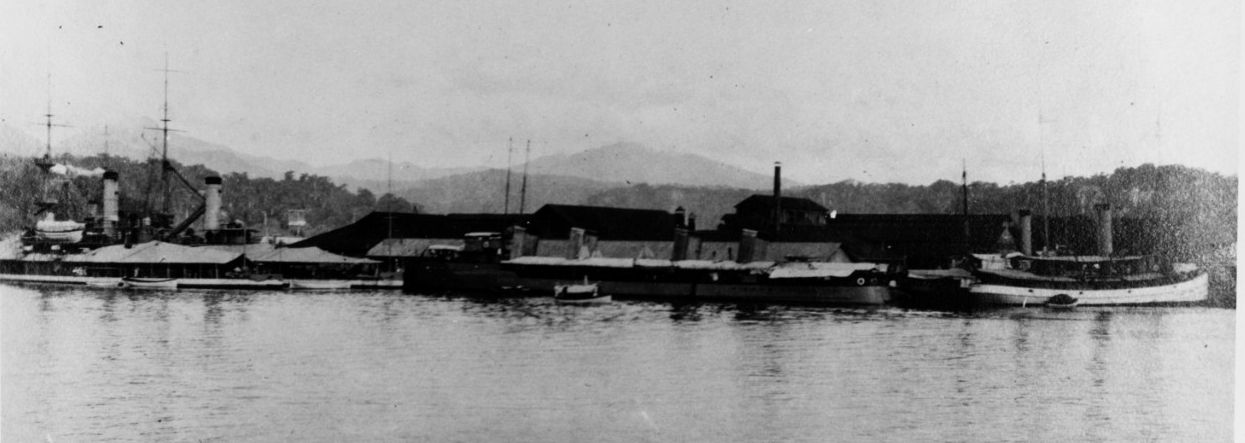
Getting underway with Dale in early January 1916 from Manila Bay, they made a tour of the southern islands of the Philippines calling at Zamboanga; Jolo; Bongao, Tawi Tawi; Parang, Mindanao; and Isabella, Basilan before returning to Manila on 21 February. The destroyer departed Cavite on 9 August and steamed to Zamboanga and other islands in the southern Philippines, before standing in to Olongapo on 18 October.
With the U.S. declaration of war against Germany on 6 April 1917, Decatur was still stationed in the Philippine Islands, based at Cavite, assigned to the First Destroyer Division, Torpedo Flotilla, Asiatic Fleet. She continued in this duty until 31 July.
Ordered to service in European waters, Decatur sailed from Cavite in company with Dale, Bainbridge, Barry, and Chauncey on 1 August 1917. The force was bound for Gibraltar (Base No. 9) via Kudat, British North Borneo [Brunei]; Singapore (where they fell in with Caesar [Collier No. 16] and the former-German merchantman, turned Asiatic Torpedo Flotilla flagship, Camilla Rickmers [later Ticonderoga (Id. No. 1958)]; Colombo, Ceylon [Sri Lanka]; Bombay [Mumbai], India; and Aden [Yemen]. Passing through the Suez Canal on 24 September, they entered the Mediterranean and steamed to Valetta, Malta. Camilla Rickmers’ speed slowed the destroyers’ transit to the Atlantic. Departing Malta, the destroyers set a course for Naples, Italy. While en route on 8 October, Decatur sighted a submarine around 1:00 p.m., off her starboard beam, approximately 3.5 miles distant. She fired one shot from her forward 3-inch gun just as the U-boat submerged. The shot, however, fell short. They saw no further evidence of the submarine for an hour, when at 2:00 p.m. the U-boat reappeared on the horizon about four miles astern the destroyer. This was followed by an explosion and then the submarine was no longer seen. Continuing on, the flotilla reached Gibraltar on 20 October. Vice Adm. William S. Sims, Commander, U.S. Naval Forces Operating in European Waters, extended a commendation to the destroyer force on their successful passage from Cavite to Gibraltar on 23 October.
Assigned to the U.S. Patrol Squadrons under Rear Adm. Albert P. Niblack, Decatur departed Gibraltar on 29 October in company with Dale and HMS Northesk to conduct an anti-submarine patrol, she returned the next morning without having made contact. This was the beginning of her convoy escort and anti-submarine patrol duties in both the Atlantic and Mediterranean.
On 21 December 1917, she entered dry dock, at the Gibraltar Navy Yard, and undocked after overhaul on 10 January 1918. While conducting a convoy escort mission on 22 February, the U.S. merchantman Escoutney mistook Decatur for an enemy U-boat and fired seven shots at the destroyer. All the rounds fell short and the ship suffered no damage. Several weeks later, on 14 March, the ship’s crew went to general quarters when a wake from a periscope was reported. The ship went to full speed and when the ship had closed to half the distance, the wake disappeared. She circled the area trying to confirm whether a submarine was actually present in order to fire a shot. With no further evidence of a submarine, she neither fired her guns nor dropped depth charges. Again on escort duty, just over a month later, on 16 April, Decatur traversed over what she believed was a submarine wake and dropped a depth charge with no positive result.
Decatur coaled on 1 May 1918 and received orders at noon the next day to get underway to proceed with Dale to meet Convoy G-Ga-20 which had been attacked by a U-boat at 3:00 a.m. Clearing “The Rock” at 3:40 p.m., the destroyers made their best speed and sighted the convoy at 1:00 p.m. on the 3rd. Taking up station along with HMS Sweetbriar, the escorts conveyed the ships in to Gibraltar on 4 May.
Decatur sortied again on 16 May 1918 with HMS Underwing, HMS Rule, Dale, and Bainbridge escorting Convoy HG 76 with Tampa as ocean escort into the danger zone. While en route, Bainbridge sighted a suspicious object but there was negative contact. The escorts parted at 5:15 p.m. on the 17th and proceeded southward to meet a 20-ship convoy escorted by HMS Gillia. Meeting the inbound convoy at daybreak on 18 May, they all stood in to Gibraltar at 6:00 a.m. on 19 May.
Decatur sortied again on 9 June, this time in company with HMS Coreopsis, HMS Kilkeel, and Dale to escort the 29-ship Convoy HG 82 with HMS Kileclaire as ocean escort into the danger zone. Leaving HG 82 at noon on 10 June, they met OM 74, 15 ships with HMS Kildine as ocean escort and brought them in to port on 11 June. Decatur was underway again on 12 June with HMS Coreopsis, HMS Kilkeel, and Dale. Rendezvousing with the 11-ship convoy with Tampa as ocean escort off Ceuta and escorted it through the straits to 10º30'W where they parted company to meet Birmingham and the seven ship OE convoy on 13 June and shepherding them in to Gibraltar the next day. Underway again accompanied by HMS Coreopsis, HMS Rule, HMS, Kilkeel, and Dale, Decatur escorted HG 84’s 19 ships through the danger zone on 17 June. The next day they were joined by HMS Active and Birmingham as ocean escort. Having brought HG 84 through the danger zone, the escorts parted company and stood to the northeast to await OM 76. This latter 14-ship convoy with Ossipee as ocean escort, was met at 1600 on the 18th and safely brought into Gibraltar the next day.
Decatur sortied again on 16 May 1918 with HMS Underwing and HMS Rule, Dale, and Bainbridge escorting Convoy HG 76 with Tampa as ocean escort into the danger zone. While en route, Bainbridge sighted a suspicious object but there was negative contact. The escorts parted at 5:15 p.m. on the 17th and proceeded southward to meet a 20-ship convoy escorted by HMS Gillia. Meeting the inbound convoy at daybreak on 18 May, they all stood in to Gibraltar at 6:00 a.m. on 19 May.
Decatur sortied again on 9 June, this time in company with HMS Coreopsis, HMS Kilkeel, and Dale to escort the 29-ship Convoy HG 82 with HMS Kileclaire as ocean escort into the danger zone. Leaving HG 82 at noon on 10 June, they met OM 74, 15 ships with HMS Kildine as ocean escort and brought them in to port on 11 June. Decatur was underway again on 12 June with HMS Coreopsis, HMS Kilkeel, and Dale. Rendezvousing with the 11-ship convoy with Tampa as ocean escort off Ceuta and escorted it through the straits to 10º 30' W where they parted company to meet Birmingham and the seven ship OE convoy on 13 June and shepherding them in to Gibraltar the next day. Underway again accompanied by HMS Coreopsis, HMS Rule, HMS, Kilkeel, and Dale, Decatur escorted HG 84’s 19 ships through the danger zone on 17 June. The next day they were joined by HMS Active and Birmingham as ocean escort. Having brought HG 84 through the danger zone, the escorts parted company and stood to the northeast to await OM 76. This latter 14-ship convoy with Ossipee as ocean escort, was met at 1600 on the 18th and safely brought into Gibraltar the next day.
Dale entered the dockyard at Gibraltar on 1 July, for retubing her boilers. At the same time, Bainbridge and Barry were also deemed unfit and required to enter the yard for significant repairs and overhaul. As a result, this left the Destroyer Force at Gibraltar with only three serviceable ships – Decatur, HMS Northesk, and HMS Parthian – which prompted the dispatch of Gregory (Destroyer No. 82) and Dyer (Destroyer No. 84) to Gibraltar.
Decatur continued to perform her escort duties through the summer and autumn of 1918. On 20 September, while at sea on escort duty with the Coast Guard cutter Seneca ahead, the destroyer sighted a U-boat on the starboard side of the convoy. Decatur went to full speed and steamed directly for the object. At 11:22 a.m. she dropped her first depth charge, followed by three additional (only two of which detonated). At 11:38 a.m., she sighted an oil slick, and dropped two further depth charges. There was, however, no proof of positive result from the attack. In the waning days of the war on 9 November, Decatur and HMS Defender were escorting the British pre-dreadnought battleship HMS Britannia, 11 miles off Cape Spartel, west of Gibraltar, when at 7:14 a.m., the latter was torpedoed by UB-50 (Oberleutnant zur See Heinrich Kukat commanding). In response, Decatur went to full speed and dropped four depth charges to keep the U-boat submerged. Parker (Destroyer 48) and Luce (Destroyer No. 99) also sped to the scene and responded likewise. Other ships arrived to assist with salvage attempts, but the battleship sank at 10:47. Afterward, Decatur returned to Gibraltar. Two days after the sinking, the Armistice ending hostilities went into effect on 11 November.
With the war over, Decatur was dispatched for a return to the United States. Clearing Gibraltar on 8 December 1918, she steamed to Lisbon, Portugal (9-11 December), thence to Ponta Delgada (Base No. 13), Azores (13-20 December), then on to Bermuda (Base No. 24) where she arrived on 29 December. She remained there through the end of the year and into January 1919. Her departure was delayed by the need to rivet a strengthening strap to reinforce her hull. With her repairs completed she departed on 5 February 1919.
Decatur finally made her return to the U.S., standing in to the Philadelphia (Pa.) Navy Yard on 6 February 1919. The destroyer was decommissioned there on 20 June 1919. Stricken from the Navy list on 15 September, Decatur was sold on 3 January 1920 to Henry A. Hitner's Sons, Philadelphia, for scrapping.
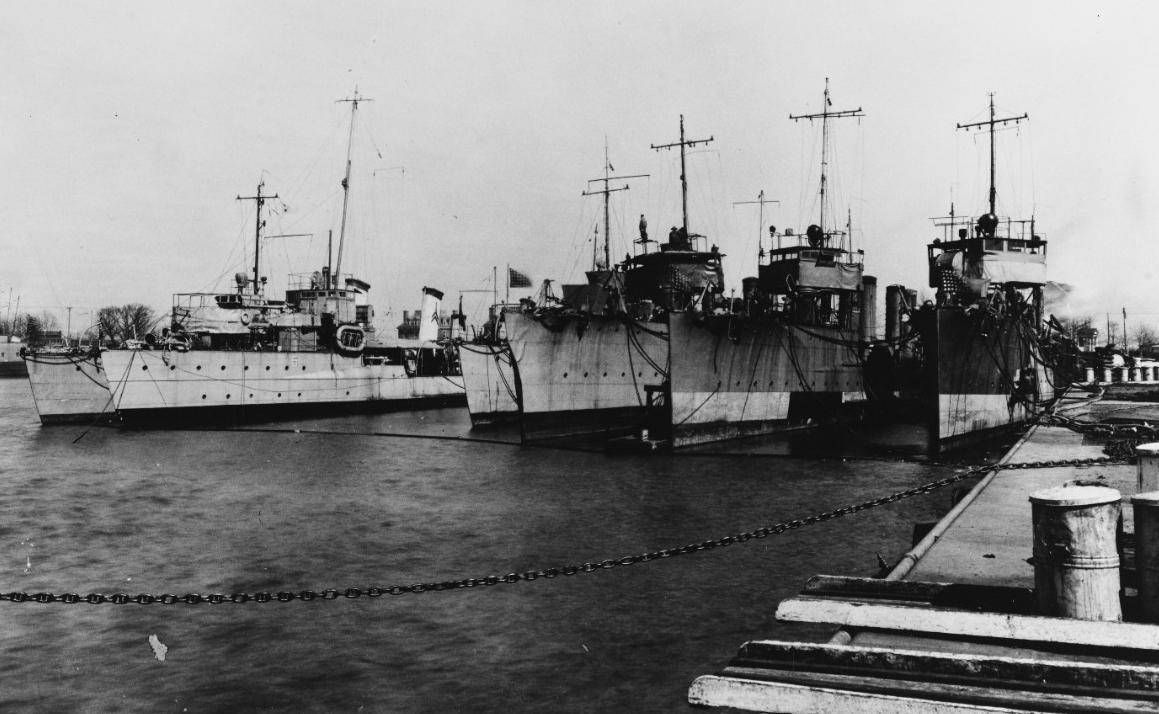
| Commanding Officers | Dates of Command |
| Lt. Lloyd H. Chandler | 19 May 1902 – 27 April 1904 |
| Lt. Dudley W. Knox | 27 April 1904 – 28 January 1906 |
| Lt. Louis Shane | 28 January 1906 – 28 February 1906 |
| Ens. Ralph A. Koch | 28 February 1906 – 17 March 1906 |
| Lt. Louis Shane | 17 March 1906 – 13 April 1906 |
| GMC James C. McDermott | 13 April 1906 – 7 May 1907 |
| GMC William J. Foley | 7 May 1907 – 10 July 1907 |
| Ens. Chester W. Nimitz | 10 July 1907 – 28 July 1908 |
| Ens. John W. Smealie | 28 July 1908 – 18 February 1909 |
| Ens. Carroll S. Graves | 22 April 1910 – 20 March 1912 |
| Lt. Burton H. Green | 20 March 1912 – 21 March 1913 |
| Ens. Francis Cogswell | 21 March 1913 – 13 May 1913 |
| Lt. (j.g.) Owen C. Williams | 13 May 1913 – 8 September 1913 |
| Lt. Ernest Durr | 9 September 1913 – 7 August 1914 |
| Lt. Wilfred E. Clarke | 7 August 1914 – 1 July 1916 |
| Ens. William G. B. Hatch | 1 July 1916 – 7 August 1916 |
| Lt. (j.g.) Ralph R. Stewart | 7 August 1916 – 1 February 1918 |
| Lt. Cmdr. Harry A. McClure | 1 February 1918 – 4 August 1918 |
| Lt. William G. B. Hatch | 4 August 1918 – 21 February 1919 |
| Lt. Homer L. Grosskopf | 21 February 1919 – 20 June 1919 |
Christopher B. Havern Sr.
2 April 2018


